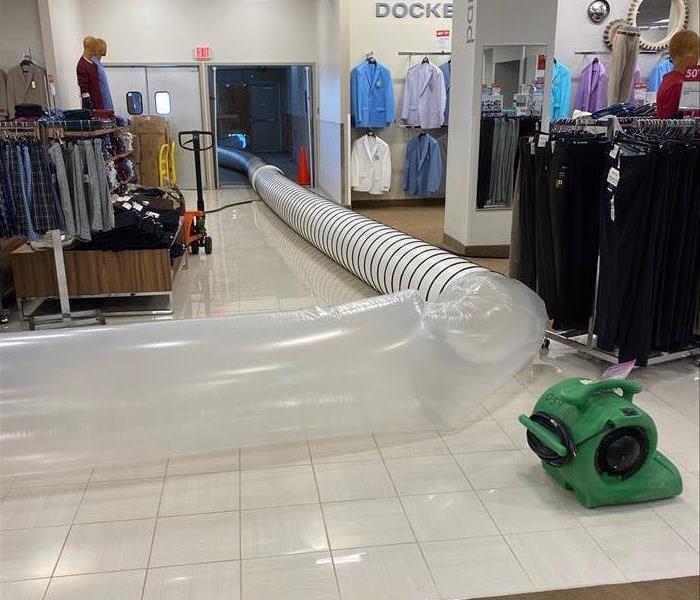Tackling Mold: A Guide to Effective Remediation in Commercial Properties
6/17/2024 (Permalink)
As a property manager or business owner, understanding and effectively addressing mold issues is crucial for maintaining a safe and functional environment.
Identifying the Problem
The first step in mold remediation is identification. Mold thrives in damp, humid environments and often hides in less visible areas such as behind walls, under flooring, or in HVAC systems. Signs of mold include musty odors, visible growth, and allergic reactions among occupants. Regular inspections and prompt action are essential to catching mold early before it spreads extensively.
Assessing the Scope
Once mold is detected, a thorough assessment of the affected areas is necessary. This involves determining the extent of the mold growth and identifying any underlying moisture issues that may be fueling its development. Professional mold inspectors can conduct comprehensive assessments using moisture meters, thermal imaging, and air quality tests to provide a clear picture of the problem.
Developing a Remediation Plan
With assessment results in hand, the next step is to develop a remediation plan tailored to your commercial property. This plan should outline specific strategies for mold removal and prevention, taking into account the type of mold present, affected surfaces, and the building's layout.
Key components of a remediation plan may include:
- Containment: Isolating the affected area to prevent mold spores from spreading to clean areas.
- Removal: Physical removal of mold-infested materials such as drywall, carpeting, or insulation that cannot be effectively cleaned.
- Cleaning: Thorough cleaning and disinfection of surfaces using appropriate mold remediation products.
- Moisture Control: Addressing underlying moisture sources through repairs to leaks, improving ventilation, or installing dehumidifiers.
- Prevention: Implementing measures to prevent future mold growth, such as regular inspections, maintaining proper humidity levels, and educating occupants about moisture control.
Long-Term Maintenance
To prevent future mold issues, ongoing maintenance and monitoring are key. Implementing a proactive maintenance plan that includes regular inspections, prompt repairs of leaks or moisture issues, and educating building occupants on mold prevention measures can help maintain a mold-free environment.





 24/7 Emergency Service
24/7 Emergency Service
